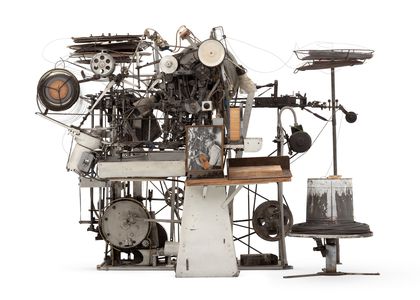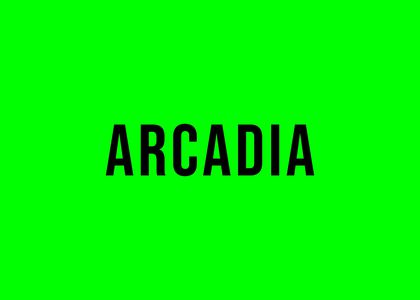The calendar we use in civil society (the ‘Gregorian’ calendar) is a solar one – based on the time it takes for the Earth to orbit the Sun. Many religious calendars, however, are based on the phases of the Moon. These include the Catholic, Jewish and Islamic religious calendars. The dates of festivities, holidays and important events in the lunar calendar move by about 10 days every year within the Gregorian calendar.
The ninth month of the Islamic calendar, known as Ramadan, is the Islamic month of fasting. The Hilal, or crescent moon, marks the beginning of the fasting period. However, there are differences of opinion on how to define ‘crescent’. While some simply demand an unaided sighting by eye of the crescent moon, others are leaning towards using astronomical calculations to avoid confusion.
The following astronomical data concern the new and crescent moons in April and May of 2022 for Australia.
The simplest useful criterion is the lagtime, or difference, between sunset and moonset. If that time is greater than 47 minutes (at the latitude of Sydney) the crescent moon should be visible to the unaided eye after sunset and before the setting of the Moon.
The most common method of prediction, however, is to use a scheme developed by Dr Bernard Yallop of HM Nautical Office and proposed in 1997. This scheme or algorithm involves the altitude difference between the Sun and the Moon; a calculated ‘best time’ to view the Moon; and the width of the crescent. The Yallop method is applicable to any location. More details of this method and maps displaying the Moon’s visibility are available here.
Please note that all dates & times in this article are for Sydney, unless otherwise stated, and they are in Australian Eastern Daylight Time (AEDT) or Australian Eastern Standard Time (AEST), i.e. Sydney time, as appropriate. Please note that Daylight Saving ends on Sunday April 3rd at 3am.
The New Moon in April 2022
The new moon in April 2022 will occur at 5:24pm on Friday, April 1st. On April 1st the Sun will set at 6:51pm and the Moon will set at 7:02pm. The lagtime is only 11 minutes so the crescent moon will not be visible to the unaided eye at Sydney’s latitude, and the Yallop method concurs. Further, the Yallop method also shows that the crescent moon will not be visible from any location in Australia on April 1st.
On Saturday April 2 the Sun sets at 6:49pm and the Moon sets at 7:30pm. The lagtime is now 41 minutes so once again the crescent moon will not be visible to the unaided eye at Sydney’s latitude. The Yallop method concurs. However, the Yallop method provides a more detailed picture for Australia: If you are north of a line joining (approximately) Carnarvon (WA) to Cairns (Qld) the crescent Moon should be easily visible to the unaided eye. If you are south of that line but still north of a line joining (approximately) Adelaide (SA) to Taree (NSW) the crescent Moon may be visible to the unaided eye under perfect atmospheric conditions, i.e. no cloud, no dust and a very clear western horizon – fortunately, this time of the year is Autumn and the atmospheric conditions are often nearly perfect. If you are south of that line (Adelaide to Taree) or on the northern coast of Tasmania the crescent Moon may be visible to the unaided eye but only after first being found with binoculars or a telescope. To avoid irreversible eye damage please ensure the Sun has fully set before searching the western horizon for the crescent moon with your binoculars or telescope. Elsewhere in Tasmania, including Launceston, the crescent Moon will not be visible to the unaided eye.
Finally, on Sunday April 3 the Sun sets at 5:48pm (Daylight saving is now over) and the Moon sets at 6:58pm. The lagtime is now 70 minutes and the crescent moon should be visible (at Sydney’s latitude) to the unaided eye if the western sky is clear of cloud. The Yallop method concurs. Further, the Yallop method shows that the crescent moon should be visible to the unaided eye from all locations in Australia.
In summary, the crescent Moon will not be visible from Australia on April 1st. On April 2 it may be visible to the unaided eye if you are north of the Adelaide-Taree line. South of this line, including all of Victoria and the north coast of Tasmania, it may be visible after being found with binoculars or a telescope. However, from the rest of Tasmania it will not be visible. Finally, on April 3 the crescent moon should be easily visible from all parts of Australia.
The New Moon in May 2022
The following new Moon occurs on Sunday May 1st at 6:28am. On the evening of May1st the Sun will set at 5:15pm and the Moon will set at 5:29pm. The lagtime is just 14 minutes so the crescent moon will not be visible to the unaided eye (at Sydney’s latitude), and the Yallop method concurs. From all other Australian locations the crescent moon will also not be visible.
On Monday May 2 the Sun will set at 5:14pm and the Moon will set at 6:01pm. The lagtime is now 47 minutes so the crescent moon will be on the limit of visiblity to the unaided eye at Sydney’s latitude. This will be a good test of the lagtime criteria! However, the Yallop method provides a more detailed picture for Australia: If you are north of a line joining (approximately) Port Pirie (SA) to Port Macquarie (NSW) (and extend that line westwards across the Eyre Peninsula) the crescent Moon should be easily visible to the unaided eye. If you are south of that line and on the mainland (i.e. excluding Tasmania) the crescent Moon may be visible to the unaided eye under perfect atmospheric conditions, i.e. no cloud, no dust and a very clear western horizon – fortunately, this time of the year is Autumn and the atmospheric conditions are often nearly perfect. From Tasmania the crescent Moon may be visible to the unaided eye but only after first being found with binoculars or a telescope. To avoid irreversible eye damage please ensure the Sun has fully set before searching the western horizon for the crescent moon with your binoculars or telescope.
On Tuesday May 3 the crescent moon should be easily visible to the unaided eye from all parts of Australia.
Other locations
If you are not in Sydney but your latitude is within a degree or so of Sydney’s latitude then the lagtime method of 47 minutes should work sufficiently well for you – but you will need to find the time of sunset and moonset for your particular location.
For Melbourne we can provide the following additional information: At the moment of sunset on April 2 the Moon will be at an altitude above the horizon of slightly under 7-degrees and it will be 10-degrees to the right of the Sun, i.e. from the point where the Sun set look 10-degrees to the right then 7-degrees up to find the crescent Moon. On April 3, again at the moment of sunset, the Moon will now be at an altitude above the horizon of just over 11-degrees and about 21-degrees to the right of where the Sun set.



Hi Dr Andrew , thankyou for your valuable annual post regarding Predicting the visibility of the crescent Moon and the astronomical data concerning the new and crescent moons in April and May of 2022 for Australia.
Would you kindly advise if there is a way to obtain data on a Monthly basis showing the lag-time between sunset and moon set of the crescent moon and whether the moon will be visible to the unaided eye for the East Coast and if possible From all other major Australian Cities /locations ?
Hani Miski, We are pleased to hear you find the predictions helpful. Unfortunately, we are unable to provide a monthly post on the moon visibility. However, you can use the references linked to from the post (the Yallop method link) to view the maps of lunar visibility. These will allow you to make your own predictions of crescent moon visibility from anywhere in Australia.
Hi Andrew,
What a wonderful article! Both detailed and succint.
I was wondering if you could help me with a few questions that have popped up for me?
1. Do you know the lag time for Melbourne, as our lattitudinal difference is almost 4 degrees?
2. I’ve seen the sighting maps frequently, but how were you able to determine the suburb of Taree for example? (This year, I wasn’t sure whether Sydney and Melbourne fell into the same visibility zone, but according to your article, I think it will).
Thank you!
Ali, We get many enquiries about the new moon sightng each year and our goal is to provide the basic astronomical information to assist everyone to make their own decisions and sightings.
The lagtime for Melbourne will be 48-minutes. But keep in mind this is a simple criterion to be used as a guide only. It has a seasonal variability of a few minutes (for Melbourne) and a minute or two (for Sydney). My source for this is the 1994 paper by Mohammad Ilyas (see table III).
For the Yallop-method sighting maps I just estimate the location (eg Taree) visually from the map, and compare that to an atlas! The outline of Australia is quite detailed on the maps but I still keep writing ‘approximately’!
Thanks Andrew very useful information regarding moonlighting. I appreciate your time and efforts Abid
Dear Andrew,
Many thanks for this detailed and exact information. It is very useful to Muslims planning for Ramadan. This is an exemplary website and my go to resource for work/life planning for Ramadan and Eid.
All the best, Arfa
Thank you for this information, this is super useful for Muslims. I would say there are more than two positions than unaided sighting or calculations. Many Muslims also believe that aided sightings is allowed, such as through binoculars or telescopes from the ground, there are some opinions that even say one could look from above the clouds from a plane! Do you think it would be visible through binoculars or telescopes from the ground?
Faizan Siddiqui, Thank you. I try to keep this annual post relatively simple and not too long and so have avoided including aided sighting predictions. However, yes, you will sight the moon earlier if you use binoculars or a telescope (taking care to never look at the Sun through them!). If you look at the Yallop maps (via the link above) they show locations where this is possible.
Brother Jacob, Thanks for the valuable information.
Will Canberra will also be on the same latitude as Sydney?
As per the lag time difference (yallop method) is there any other observation method which may suggest that moon may be visible to unaided eye on 1 April 2022.
Farooq, Canberra’s latitude is within 1.5-degrees of Sydney’s latitude so the predictions here, for Sydney, will work well for Canberra also. There is no way the new moon will be visible to the naked eye on April 1st 2022. The moon will be only about 1.5-hours old when it sets and the record for the earliest it has been seen by eye is about 15.5-hours. It could only be done photographically.
This is very useful information for Muslims to determine the first day of ramadan in April 2022. Thank you Andrew for your excellent service.